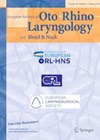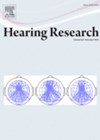
Journal Reviews
Current AI audiology knowledge
Artificial intelligence (AI) tools are becoming increasingly popular and can be utilised by patients, healthcare professionals and students. The performance of chatbots can be variable between different AIs and, indeed, different topics. There is no current consensus for the best...
To pack or not to pack!
Ear packing is thought to support grafts, control bleeding and facilitate healing. However, it is not without complications such as fibrosis and infection. The authors aimed at investigating the effect of middle ear packing on graft success rate in myringoplasty...
Audiometric and Quality of Life comparison between Bonebridge® and Osia®
Bone conduction implants are an alternative to hearing aids for varying reasons. Both Bonebridge® and Osia® are transcutaneous devices maintaining intact skin, establishing a connection between the implanted device and external processor through a magnetic system. Both are described as...
Endoscopic approach to the internal auditory canal (IAC)
The otoendoscope, with its wide-angle visualisation, has made it an increasingly popular tool to perform outer, middle and even inner ear surgery. Approaches to the IAC with the endoscope have been described by several authors. In this paper, Valente et...
Tinnitus without hearing loss – inflammation?
Inflammation can have a profound impact on multiple systems. Certainly in recent years, autoimmune conditions are on the rise and the impact on audiovestibular symptoms have been documented. Given the rates in the population, the impact of inflammation on the...
Endolymphatic duct, a bit more than what meets the eye
It is theorised that the endolymphatic duct (ED) and the endolymphatic sac (ES) system play a role in both the production and absorption of endolymph. This system could be responsible for development of endolymphatic hydrops (EH). Recently, the presence of...
Bell’s palsy incidence in Korean population
Bell’s palsy is an acute idiopathic paresis or paralysis of the peripheral facial nerve. It is the most common cause of facial nerve palsy with a reported incidence ranging from 11.5–55.3 per 100,000. The aetiology remains unclear. Several studies have...
Genetics of IP-III
The authors provide a literature review of the genetic basis and clinical features of incomplete partition (IP)-type III. The condition is seen typically in males and is due to mutation in the POU class 3 homeobox 4 (POU3F4) gene which...
Post-Covid dizziness disability
An estimated 750 million people worldwide were affected by Covid-19. A significant proportion have been left with long-term symptoms for which the World Health Organization has proposed the term ‘post-Covid condition’ (PCC). Dizziness is but one of the symptoms. Dizziness...













